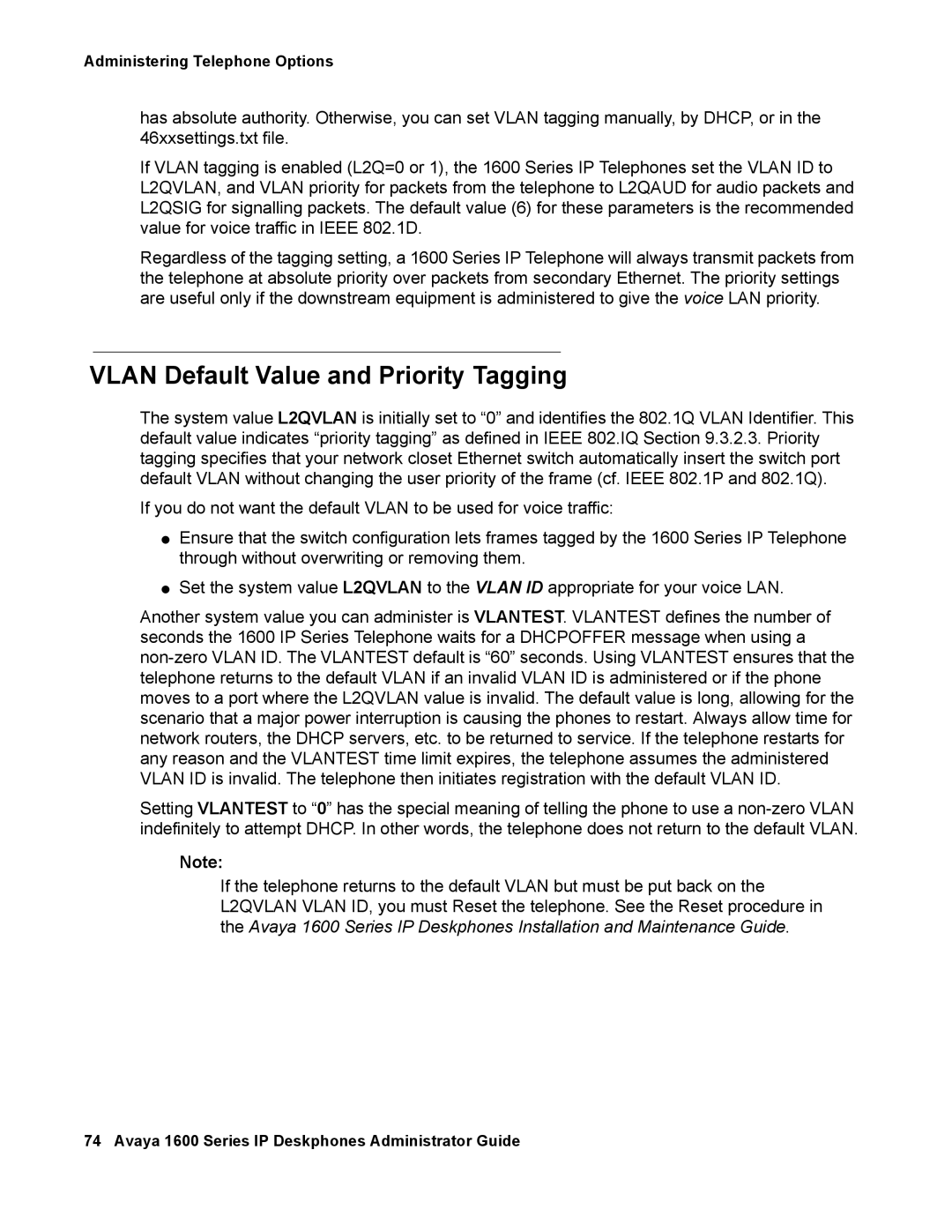Administering Telephone Options
has absolute authority. Otherwise, you can set VLAN tagging manually, by DHCP, or in the 46xxsettings.txt file.
If VLAN tagging is enabled (L2Q=0 or 1), the 1600 Series IP Telephones set the VLAN ID to L2QVLAN, and VLAN priority for packets from the telephone to L2QAUD for audio packets and L2QSIG for signalling packets. The default value (6) for these parameters is the recommended value for voice traffic in IEEE 802.1D.
Regardless of the tagging setting, a 1600 Series IP Telephone will always transmit packets from the telephone at absolute priority over packets from secondary Ethernet. The priority settings are useful only if the downstream equipment is administered to give the voice LAN priority.
VLAN Default Value and Priority Tagging
The system value L2QVLAN is initially set to “0” and identifies the 802.1Q VLAN Identifier. This default value indicates “priority tagging” as defined in IEEE 802.IQ Section 9.3.2.3. Priority tagging specifies that your network closet Ethernet switch automatically insert the switch port default VLAN without changing the user priority of the frame (cf. IEEE 802.1P and 802.1Q).
If you do not want the default VLAN to be used for voice traffic:
●Ensure that the switch configuration lets frames tagged by the 1600 Series IP Telephone through without overwriting or removing them.
●Set the system value L2QVLAN to the VLAN ID appropriate for your voice LAN.
Another system value you can administer is VLANTEST. VLANTEST defines the number of seconds the 1600 IP Series Telephone waits for a DHCPOFFER message when using a
Setting VLANTEST to “0” has the special meaning of telling the phone to use a
Note:
If the telephone returns to the default VLAN but must be put back on the L2QVLAN VLAN ID, you must Reset the telephone. See the Reset procedure in the Avaya 1600 Series IP Deskphones Installation and Maintenance Guide.
74 Avaya 1600 Series IP Deskphones Administrator Guide
